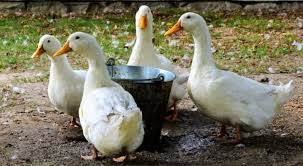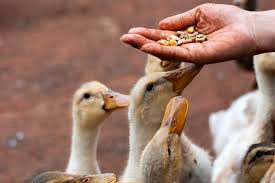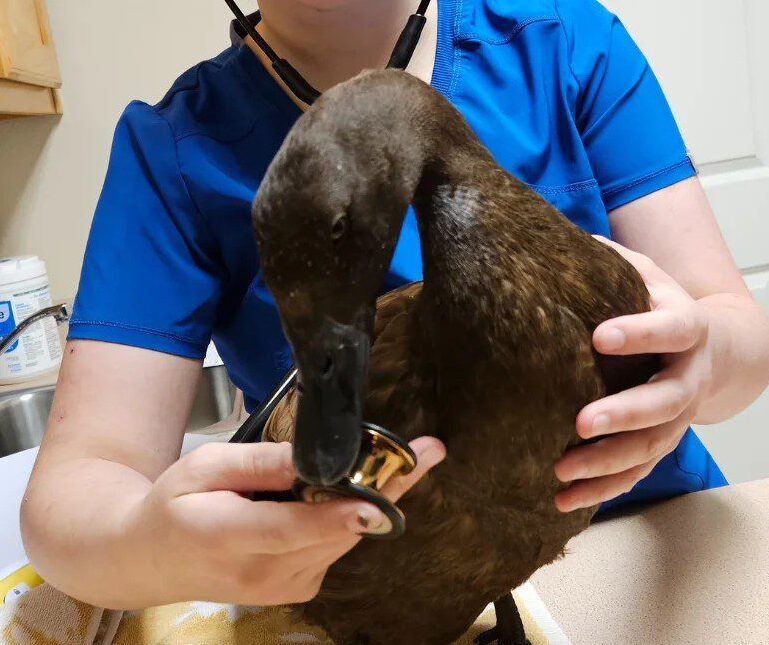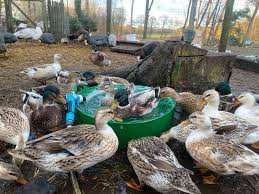Duck care is essential for anyone considering raising these charming and versatile birds. Ducks are not only delightful companions but also provide numerous benefits, such as pest control and egg production. This guide will help beginners understand the fundamental aspects of duck care, including feeding, housing, and health management, ensuring a healthy and happy flock.
Ducks are social animals and thrive in a flock environment. Ideally, you should keep at least three ducks together to promote natural behaviors and reduce stress. They are known for their friendly and curious nature, making them enjoyable pets.
However, proper care is crucial to their well-being. This guide will cover the basics of caring for ducks, emphasizing feeding practices, housing needs, and general health tips.
Feeding ducks requires attention to their nutritional needs. Ducks are omnivores, meaning they eat both plant and animal matter. Their diet should consist of a balanced mix of commercial duck feed, grains, vegetables, and protein sources.
Duck feed is formulated to provide essential nutrients, including protein, vitamins, and minerals, which are vital for growth, egg production, and overall health.
In addition to commercial feed, ducks enjoy foraging for greens, insects, and small fish, which contribute to their diet. Providing a variety of foods helps ensure they receive all necessary nutrients. Freshwater should always be available, as ducks need it for both drinking and foraging. They also enjoy splashing in water, so having a shallow pond or kiddie pool is beneficial.
Creating a suitable living environment is essential for duck care. Ducks need shelter to protect them from extreme weather conditions and predators. A simple, well-ventilated coop can be designed using materials like wood or metal, ensuring it is secure and comfortable. The coop should provide enough space for the ducks to move around freely, ideally at least 4 square feet per duck.
Additionally, ducks require access to an outdoor area where they can roam and forage. A fenced yard or enclosed run can keep them safe while allowing them to explore. Providing a muddy area or small pond can enhance their quality of life, as ducks love to dabble in water. Ensure the area is clean and free from debris, as a clean environment reduces the risk of disease.
Monitoring the health of your ducks is vital for their well-being. Regularly check for signs of illness, such as lethargy, changes in eating habits, or abnormal droppings. Providing a clean living space, proper nutrition, and access to fresh water will help prevent many health issues. Regular vaccinations and parasite control should also be part of your health management routine.
Understanding Duck Breeds

1. Pekin Duck: Pekins are one of the most common meat duck breeds, known for their rapid growth and tender meat. They have a friendly disposition and are great for beginners.
2. Khaki Campbell: This breed is renowned for its prolific egg production, often laying 250-300 eggs annually. Khaki Campbells are hardy and adaptable, making them suitable for various climates.
3. Indian Runner Duck: Indian Runners are unique for their upright posture and energetic nature. They are excellent layers, producing around 200-300 eggs per year, and are also good foragers.
4. Muscovy Duck: Muscovies are distinct from other duck breeds due to their ability to fly. They are quiet compared to other ducks and can lay around 100-200 eggs annually. Muscovies are also known for their flavorful meat.
5. Rouen Duck: Rouens are similar in appearance to the Pekin but are primarily raised for their meat. They have a calm temperament and produce good quality meat, making them popular among duck farmers.
Essential Housing Requirements
1. Space Requirements: Ducks need ample space to roam and forage. A minimum of 4 square feet per duck in the housing area and an additional 10 square feet in an outdoor run is recommended to prevent overcrowding.
2. Shelter Design: Duck housing should be well-ventilated, dry, and protected from harsh weather. Provide insulated shelter during winter months and shade during summer. A simple wooden or metal coop with proper roofing will suffice.
3. Nesting Areas: Provide comfortable nesting boxes for ducks to lay their eggs. Each nesting box should be about 12 inches wide and deep, with a soft bedding material like straw or wood shavings.
4. Water Source: Ducks require access to clean water for drinking and swimming. A kiddie pool or pond can serve as a water source, but ensure it’s easy to clean and refill. Ducks love to dabble, so having a water source is essential for their health and well-being.
5. Fencing: Secure fencing is necessary to protect ducks from predators. A sturdy fence should be at least 4 feet high to keep out animals like foxes, raccoons, and dogs.
Read Also: Rose Chafer: Description, Damages Caused, Control and Preventive Measures
Duck Feeding Basics

1. Balanced Diet: Ducks require a balanced diet to thrive. A commercial duck feed formulated for their specific age and purpose (layers or meat ducks) is a good starting point. This feed should contain a mix of grains, protein, vitamins, and minerals.
2. Grain Supplementation: In addition to commercial feed, you can supplement with grains like corn, oats, and barley. These grains can be fed whole or crumbled but should not exceed 10-20% of their total diet.
3. Fresh Vegetables and Greens: Ducks enjoy a variety of fresh vegetables, such as leafy greens, peas, and squash. Offer these as treats to enhance their diet and provide essential nutrients.
4. Access to Water: Ducks need constant access to clean water for drinking and dipping their heads to aid digestion. Always ensure they have a fresh water supply, as dehydration can lead to health issues.
5. Avoid Toxic Foods: Certain foods are harmful to ducks, including avocado, chocolate, and raw beans. Always research any new food before offering it to your flock.
Nutritional Needs of Ducks
1. Balanced Diet: Ducks require a balanced diet that includes carbohydrates, proteins, fats, vitamins, and minerals. A well-rounded diet helps support growth, egg production, and overall health.
2. Protein Requirements: Young ducks, particularly ducklings, need a higher protein content (around 20-24%) for proper growth. Adult ducks require approximately 14-16% protein in their diet, which is crucial for maintaining good health and laying eggs.
3. Energy Sources: Carbohydrates are essential for providing energy. Ducks benefit from grains such as corn and barley, which are high in energy content. Incorporating these grains into their diet helps sustain their energy levels throughout the day.
4. Vitamins and Minerals: Ducks need various vitamins (A, D, E) and minerals (calcium, phosphorus) to support their immune system, bone health, and overall development. Ensure their feed contains the necessary supplements or provide them through additional sources like leafy greens and vegetables.
5. Digestive Health: Ducks have unique digestive systems, so including fiber in their diet is important. Whole grains and fibrous plants can aid in digestion and help maintain a healthy gut.
Types of Duck Feed
1. Starter Feed: For ducklings, a high-protein starter feed (20-24% protein) is essential for the first 3-4 weeks of life. This feed supports their rapid growth and development.
2. Grower Feed: After the starter phase, switch to grower feed (16-20% protein) for ducks aged 4-8 weeks. This feed helps maintain steady growth while preparing them for adult diets.
3. Layer Feed: For ducks that are laying eggs, layer feed (14-16% protein) is formulated to support egg production. This feed typically contains higher calcium levels to support eggshell formation.
4. All-Purpose Feed: Some farmers opt for all-purpose feeds, which can be suitable for mixed-age flocks. However, ensure that the protein levels meet the specific needs of each age group.
5. Supplements and Treats: Ducks enjoy various treats like fruits, vegetables, and kitchen scraps. These should complement their main diet but not exceed 10-20% of their total intake to avoid nutritional imbalances.
Fresh Water Requirements
1. Constant Access: Ducks need constant access to fresh, clean water for drinking and dipping their heads. Water aids in digestion and helps keep their feathers clean and healthy.
2. Swimming Water: Providing a shallow pool or kiddie pool allows ducks to swim, which is vital for their physical and mental well-being. Swimming helps them maintain healthy feathers and provides exercise.
3. Cleanliness: Change the water regularly to prevent contamination and maintain hygiene. Dirty water can lead to health issues, so ensure that water sources are easy to clean and refill.
4. Water Temperature: Ducks prefer water that is cool but not cold. Avoid letting their water sources freeze in winter, as access to water is crucial for their health.
5. Avoiding Dehydration: Monitor water consumption, especially in hot weather, as ducks can become dehydrated quickly. Ensure they have enough water, particularly if they are laying eggs or experiencing heat stress.
Read Also: Bedbugs: Description, Damages Caused, Control and Preventive Measures
Common Health Issues in Ducks

1. Respiratory Issues: Ducks can suffer from respiratory diseases due to poor ventilation or high humidity in their housing. Symptoms include coughing, sneezing, and nasal discharge. Good hygiene and housing practices can help prevent these issues.
2. Foot Problems: Ducks can develop foot-related issues like bumblefoot, characterized by swollen feet or sores. Provide proper bedding and clean environments to reduce the risk of injury and infection.
3. Egg Binding: Egg binding occurs when a duck cannot lay an egg, leading to distress and health complications. Ensure that laying ducks receive adequate calcium and hydration to support healthy egg production.
4. Digestive Disorders: Ducks may experience digestive issues if they consume moldy feed or insufficient fiber. Symptoms can include diarrhea and weight loss. Maintain a balanced diet and monitor their feeding habits closely.
5. Parasitic Infections: Ducks are susceptible to parasites such as mites, worms, and lice. Regularly check for signs of infestation and consult a veterinarian for appropriate treatment options.
Preventive Care and Vaccinations
1. Routine Health Checks: Regularly inspect your ducks for any signs of illness, such as lethargy, changes in appetite, or unusual behavior. Early detection can help prevent the spread of diseases.
2. Vaccination Schedule: Consult a veterinarian to establish a vaccination program tailored to your flock. Common vaccines for ducks may include those for avian influenza and Newcastle disease. Vaccination helps protect against common poultry diseases.
3. Biosecurity Measures: Implement biosecurity practices to reduce the risk of disease introduction. This includes limiting visitor access, disinfecting equipment, and keeping new birds in quarantine for a period before integrating them into your flock.
4. Nutrition and Supplements: Provide a balanced diet and consider vitamin and mineral supplements to boost immunity. Healthy ducks are less prone to diseases, making nutrition a crucial aspect of preventive care.
5. Cleaning and Sanitation: Maintain a clean living environment by regularly removing waste and replacing bedding. A clean habitat reduces the risk of infections and parasites.
Socialization and Behavior
1. Understanding Duck Behavior: Ducks are social animals and thrive in flocks. Understanding their social structure helps create a harmonious environment. Observe interactions among ducks to identify any signs of bullying or stress.
2. Providing Companionship: Ensure that ducks are kept in groups. Solitary ducks can experience stress and anxiety. A minimum of three ducks is recommended to provide companionship and social interaction.
3. Enrichment Activities: Incorporate activities and objects in their environment to stimulate their natural behaviors. This can include providing shallow water for dabbling, toys to peck at, and varied foraging opportunities.
4. Handling and Interaction: Get your ducks accustomed to human interaction from an early age. Spend time with them gently to build trust. Regular handling can help reduce stress during routine care, such as health checks or transportation.
5. Recognizing Stress Signs: Be observant of signs of stress in ducks, which may include excessive quacking, feather plucking, or hiding. Address environmental or social issues promptly to prevent further stress.
Seasonal Care Tips
1. Spring Care: As temperatures rise, ensure that ducks have access to fresh water and shaded areas. Spring is also a good time to clean their housing and prepare for breeding seasons.
2. Summer Precautions: During hot weather, provide plenty of water for swimming and cooling off. Monitor ducks for heat stress, especially in extreme temperatures. Keep their housing well-ventilated and shaded.
3. Fall Preparations: As temperatures start to drop, ensure that ducks have insulated housing to keep warm. Consider increasing their feed intake to help them build fat reserves for winter.
4. Winter Care: Provide a warm, dry, and draft-free shelter during winter. Ensure that water sources do not freeze over, as access to fresh water is essential. Check for signs of frostbite on feet and bills, especially in colder climates.
5. Seasonal Nutrition Adjustments: Adjust the ducks’ diet according to the season. In winter, consider adding more energy-dense foods to help them maintain body heat and support their immune system.
Do you have any questions, suggestions, or contributions? If so, please feel free to use the comment box below to share your thoughts. We also encourage you to kindly share this information with others who might benefit from it. Since we can’t reach everyone at once, we truly appreciate your help in spreading the word. Thank you so much for your support and for sharing!
Read Also: How to Graft an Avocado Tree to Produce Avocado Fruit
Frequently Asked Questions
We will update this section soon.

